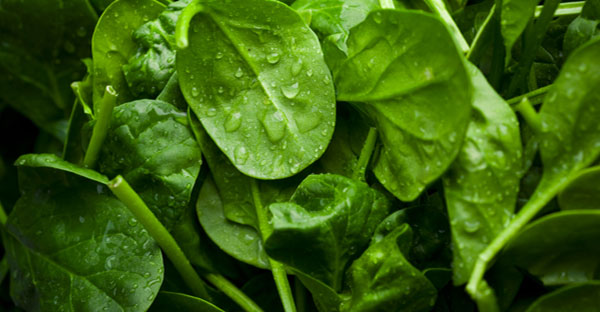

There are many myths about nutrition and health that swirl around the internet and regularly pop up in popular books and the mass media. One of the most pervasive—even in the plant-based nutrition world—is the notion that we should be striving to ‘alkalize our bodies’ in order to achieve optimal health. Excess acidity, so we’re told, is the root cause of every disease you care to name, from acne to cancer. To combat it, we must micromanage our intake of alkaline-forming and acid-forming foods, and even take alkalizing substances such as sodium bicarbonate, to make our bodies more alkaline.
For those who’ve forgotten their high school chemistry, acidity and alkalinity are measured using the pH scale, which runs from 0 to 14. 0 is highly acidic; 7 is neutral and 14 is highly alkaline—also called “basic.” The pH scale is also logarithmic, which means for example that a pH of 3 is 10 times more acidic than a pH of 4, and a pH of 8 is ten times more alkaline/basic than a pH of 7.
The myth that we need to “alkalize” our bodies is based on a fundamental misunderstanding of human physiology. The question I always ask clients who have been taken in by this myth is, “Which body compartment do you think you should alkalize?”
Surely not your stomach, which operates correctly at an acidic pH of around 2, rising to 4 or 5 after a meal. If the stomach becomes less acidic, we absorb less iron from our food (Jacobs & Miles, 1969).
Not your intestines either. The acidity of the small and large intestines (except for the last part of the small intestine, which has a mildly alkaline pH of 7.4) is carefully maintained by various digestive secretions and also by beneficial gut microbes that produce lactic acid, short chain fatty acids and other acidifying chemicals from the foods we eat. This acidic environment actually prevents the overgrowth of pathogenic (disease causing) organisms (Fallingborg, 1999).
The vagina also maintains an acidic pH of around 4.5, thanks to large numbers of lactic acid-secreting bacteria (Miller, Beasley, Dunn, & Archie, 2016).
Here’s just one example of the importance of maintaining an acidic pH in these compartments of the body: Candida albicans, the fungus that causes thrush, switches to a more virulent and dangerous form in a neutral-to-alkaline environment (Vylkova, et al., 2011). Hopefully by now, you’ll be realizing that ‘alkalizing your body’ is not necessarily a good idea!
There are essential, life sustaining chemical reactions happening in our blood continuously, and they can only happen in a narrow range of pH levels.
Most of the people who come to me with a cancer diagnosis have read or heard that “cancer can’t thrive in an alkaline environment.” But leukaemias and lymphomas do thrive in the alkaline environment of blood and lymph, which have a pH of around 7.4. In fact, there are essential, life sustaining chemical reactions happening in our blood continuously, and they can only happen in a narrow range of pH levels. Maintaining the right pH level is so important to our survival that if it drops below 7.35 or rises above 7.45, the body deploys numerous buffering mechanisms—involving blood proteins, phosphate, bicarbonate, and the lungs and kidneys—in order restore the balance.
Anything that overwhelmed those buffering mechanisms and made the blood either too acidic (below 7) or too alkaline (above 7.7) would quickly result in death.
The take-home message is that each compartment of the body has a pH range that is necessary for its proper function, and which is carefully maintained by a range of powerful mechanisms. You simply can’t “alkalize your body,” nor should you strive to.
However, you can make it easier for your body to maintain its different optimal pH ranges by making healthy food and lifestyle choices. For example, by eating a whole food, plant-based diet rich in fiber and resistant starch from vegetables, fruits, legumes, and whole grains, you’ll provide your gut microbiome with the carbohydrates needed to produce short chain fatty acids that help maintain optimal pH in the colon.
To help maintain optimal bloodstream pH, you can choose a diet rich in alkaline-forming foods such as vegetables and fruits, and limit or eliminate highly acid-forming foods such as cheese, meat, chicken, and fish.
To help maintain optimal pH in the vagina (and therefore stave off thrush) you can avoid using oral contraceptive pills and certain types of IUDs (Kandil, Hassanein, El-tagi,, & El-shirbini, 1983).
And to help maintain optimal bloodstream pH, you can choose a diet rich in alkaline-forming foods such as vegetables (especially green leafies) and fruits, and limit or eliminate highly acid-forming foods such as cheese, meat, chicken, and fish. Just don’t imagine that you’re “alkalizing your blood” by doing this. You’re simply taking the load off all those buffering mechanisms which would have to work harder to maintain optimal pH if your diet was high in acid-forming foods. And this does have considerable health benefits, including a reduced risk of kidney disease (Mirmiran, Yuzbashian, & Bahadoran, 2016).
So go ahead and stack your plate or bowl with health-promoting fruits and veggies—they’re beneficial for just about every element of physical and mental health—but for heaven’s sake, don’t fall for the notion that you are “alkalizing your body.” Your body will keep all its systems at optimal pH levels automatically without conscious intervention.
References
- Fallingborg, J. (1999). Intraluminal pH of the human gastrointestinal tract. Danish Medical Bulletin, 46(3), 183-196.
- Jacobs, A., & Miles, P. (1969). Role of gastric acid in iron absorption. Gut, 10, 226-229.
- Kandil, O., Hassanein, M., E.-t. A., & El-shirbini, M. (1983). Vaginal pH effects caused by OCs and various copper and inert IUDs. Contraceptive Delivery Systems, 3(187-193), 4.
- Miller, E., Beasley, D., Dunn, R., & Archie, E. (2016). Lactobacilli dominance and vaginal pH: Why is the human vaginal microbiome unique? Frontiers in Microbiology, 7, 1936.
- Mirmiran, P., Yuzbashian, E., & Bahadoran, Z. A. (2016). Dietary acid-base load and risk of chronic kidney disease in adults: Tehran Lipid and Glucose Study. Iranian Journal of Kidney Diseases, 3(119-125), 10.
- Vylkova, S., Carman, A., Danhof, H., Collette, J., Zhou, H., & Lorenz, M. (2011). The fungal pathogen Candida albicans autoinduces hyphal morphogenesis by raising extracellular pH. mBio, 3(e00055-11), 2.
Copyright 2025 Center for Nutrition Studies. All rights reserved.
Deepen Your Knowledge With Our
Plant-Based Nutrition
Certificate
Plant-Based Nutrition Certificate
- 23,000+ students
- 100% online, learn at your own pace
- No prerequisites
- Continuing education credits





